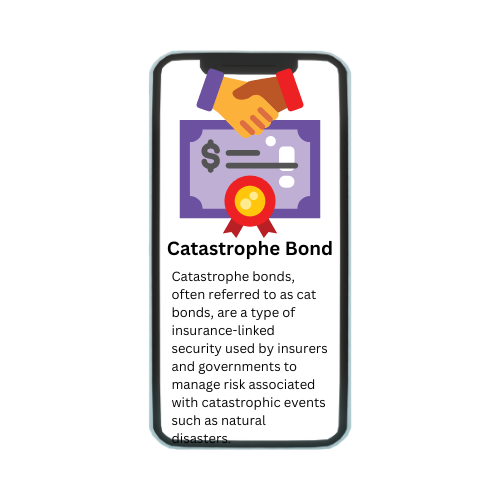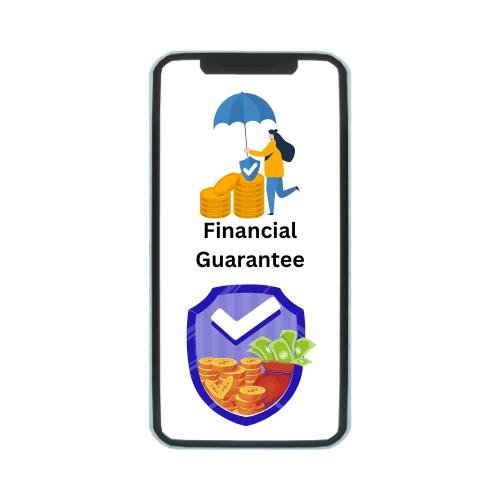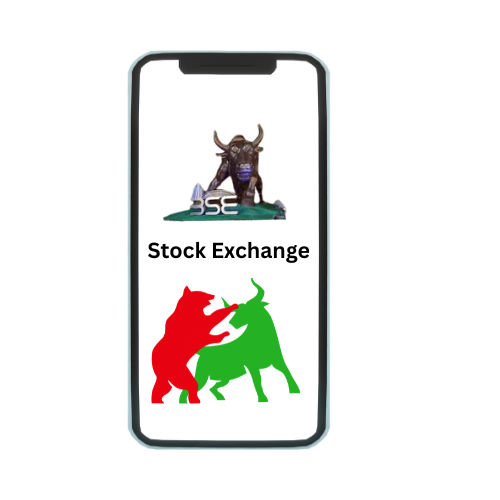Catastrophe bonds, often referred to as cat bonds, are a type of insurance-linked security used by insurers and governments to manage risk associated with catastrophic events such as natural disasters. These bonds offer a way for investors to provide capital in exchange for high potential returns, but with the understanding that they face the risk of losing their investment if a specified catastrophic event occurs. Essentially, the bond’s issuer transfers the risk of a disaster to the capital markets. If the event covered by the bond happens, the principal and interest payments to investors are reduced or forfeited to cover the losses. For investors, this offers an opportunity to diversify their portfolios with non-correlated assets that can perform well when traditional financial markets are under stress. The mechanism of cat bonds helps insurers and governments gain access to large amounts of capital quickly, which is crucial for responding to and recovering from disasters.
What is a Catastrophe Bond?
- A catastrophe bond, or cat bond, is a financial instrument designed to transfer the risk of severe natural disasters or other large-scale catastrophic events from insurers or governments to the capital markets.
- These bonds are issued by a special purpose vehicle (SPV) created for this purpose, and investors who buy these bonds provide upfront capital to the issuer. In return, they receive periodic interest payments. The key feature of cat bonds is that if a specified catastrophic event, such as a hurricane or earthquake, occurs during the bond’s term, the issuer can use the invested capital to cover the financial losses resulting from the disaster.
- This means investors face the risk of losing some or all of their principal if the catastrophe happens, but they are compensated with potentially higher returns for taking on this risk. For the issuer, cat bonds offer a way to secure large amounts of capital to cover potential losses without affecting their balance sheet or relying on traditional insurance markets.
Types of Catastrophe Bonds
Catastrophe bonds come in various types, each tailored to different risk profiles and needs. Here are the main types:
- Indemnity-Based Cat Bonds: These bonds are linked to the actual losses incurred by the issuer due to a catastrophe. Payments are based on the losses reported by the issuer, making these bonds highly accurate in reflecting the financial impact of the disaster.
- Index-Based Cat Bonds: Instead of relying on reported losses, these bonds use an index or model to determine payouts. For example, payouts might be based on the intensity of a hurricane as measured by wind speeds or the magnitude of an earthquake, offering a more standardized approach.
- Parametric Cat Bonds: These bonds trigger payouts based on predefined parameters, such as a specific wind speed or earthquake magnitude. They are designed to provide quicker payouts since the parameters are objectively measurable and do not require loss verification.
- Modeled Loss Cat Bonds: Payments are determined based on catastrophe models that estimate potential losses from a disaster. These models use data and simulations to predict the financial impact, offering a blend of model-based and actual loss-based approaches.
- Collateralized Cat Bonds: These are backed by collateral placed in a secure account, ensuring that funds are available to cover claims if a catastrophe occurs. They are typically used to provide additional security to investors, reducing the risk of principal loss.
Key Components of Catastrophe Bonds
Catastrophe bonds consist of several key components that define their structure and function:
- Issuer: Typically, a government entity or insurance company issues the cat bond to raise funds for potential catastrophe-related losses. The issuer creates a special purpose vehicle (SPV) to handle the bond issuance and manage the funds.
- Special Purpose Vehicle (SPV): This legal entity is established solely to issue the cat bond and hold the capital raised from investors. The SPV manages the funds and ensures they are used according to the terms of the bond.
- Trigger Mechanism: This is the condition under which the bond’s principal or interest payments are reduced or forfeited. Triggers can be based on indemnity (actual losses), indices (measured parameters), or parametric events (predefined conditions like wind speed or earthquake magnitude).
- Principal: The amount of money raised from investors and invested by the SPV. If the specified catastrophic event occurs, the principal may be used to cover losses, potentially reducing or eliminating returns to the investors.
- Interest Payments: Investors receive periodic interest payments for taking on the risk. The rate is typically higher than that of traditional bonds due to the higher risk involved.
- Risk Transfer Mechanism: This defines how the risk is transferred from the issuer to the investors. It specifies how the risk of a catastrophe will be absorbed by the capital markets and how losses will be covered.
- Payout Structure: The terms under which investors receive their principal and interest, or forfeit them in the event of a catastrophe. This includes how the payouts are calculated and the timing of these payments.
- Catastrophe Event Definition: Detailed criteria outlining what constitutes a qualifying event for triggering payouts. This includes thresholds for natural disasters like hurricanes or earthquakes and the specific parameters that must be met.
Benefits of Investing in Catastrophe Bonds
Investing in catastrophe bonds offers several key benefits for investors:
- High Potential Returns: Catastrophe bonds often offer higher interest rates compared to traditional bonds, reflecting the higher risk associated with potential loss from catastrophic events. This can lead to attractive returns for investors willing to take on this risk.
- Diversification: These bonds provide an opportunity to diversify investment portfolios with assets that are generally uncorrelated with traditional financial markets. The performance of cat bonds is tied to the occurrence of catastrophic events rather than economic or market conditions, which can reduce overall portfolio risk.
- Non-Correlation with Financial Markets: Since cat bonds are linked to natural disasters and not to financial market fluctuations, they can act as a hedge against market downturns. This non-correlation can help stabilize portfolio returns during periods of market volatility.
- Impact Investing: Investing in cat bonds allows investors to support the insurance and reinsurance markets, which play a crucial role in disaster recovery and resilience. By participating, investors contribute to the funding of recovery efforts and the overall financial stability of regions affected by catastrophes.
- Portfolio Balance: Including cat bonds in an investment portfolio can help balance risk and return profiles. Their unique risk-return characteristics can complement traditional investments and improve overall portfolio performance.
Potential Drawbacks of Catastrophe Bonds
Investing in catastrophe bonds also comes with several potential drawbacks:
- High Risk of Principal Loss: The most significant risk is the potential loss of the principal invested if a catastrophic event occurs. If the event triggers the bond, the invested capital may be used to cover losses, leaving investors with reduced or no returns.
- Complexity: Catastrophe bonds can be complex financial instruments with intricate terms and conditions, including specific trigger mechanisms and payout structures. This complexity can make it challenging for investors to fully understand the associated risks and details.
- Limited Liquidity: These bonds often have limited liquidity, meaning they can be difficult to buy or sell in the secondary market. This can be problematic for investors who need to access their funds before the bond matures or before a trigger event occurs.
- Model Risk: Many cat bonds rely on catastrophe models to estimate potential losses and determine payouts. If these models are inaccurate or if there is a misestimation of risk, it can lead to unexpected outcomes and potential financial losses for investors.
- Event Risk: The occurrence of a catastrophe is inherently unpredictable, and the financial impact of such events can vary widely. Investors may face uncertainty regarding the timing and severity of triggering events, which can affect their investment returns.
How to Invest in Catastrophe Bonds
Investing in catastrophe bonds involves several key steps:
- Understanding the Market: Begin by gaining a comprehensive understanding of the cat bond market, including how these bonds work, the types of risks they cover, and the specific features of different bonds. Research various issuers and the types of triggers used.
- Assessing Risk Tolerance: Evaluate your risk tolerance to determine if catastrophe bonds fit your investment profile. Given their high-risk nature and potential for principal loss, it’s crucial to ensure you’re comfortable with the associated risks.
- Selecting a Broker or Investment Advisor: Due to the complexity and niche nature of cat bonds, working with a specialized broker or investment advisor who has experience in catastrophe bonds can be beneficial. They can provide guidance, access to bond offerings, and help with due diligence.
- Choosing the Right Cat Bond: Based on your risk tolerance and investment goals, select a cat bond that aligns with your criteria. Consider factors such as the bond’s trigger mechanism, payout structure, and the likelihood of the catastrophe event occurring.
- Conducting Due Diligence: Perform thorough due diligence on the bond’s terms, the issuer, and the underlying risk models. Review the bond’s prospectus and other related documents to understand the specific details and potential risks involved.
- Making the Investment: Once you’ve selected a suitable cat bond, execute the investment through your broker or investment advisor. Ensure that you’re aware of the bond’s pricing, fees, and any lock-up periods associated with the investment.
- Monitoring the Investment: After investing, continuously monitor the performance of your cat bond and any related developments in the insurance and catastrophe markets. Stay informed about changes that could impact the bond’s risk profile or performance.
- Evaluating Exit Strategies: Understand the liquidity of the cat bond and consider your exit options if needed. Be prepared for the possibility of holding the bond to maturity or dealing with secondary market conditions if you need to sell before the bond’s term ends.
Conclusion
In conclusion, catastrophe bonds present a unique and potentially rewarding investment opportunity, offering high returns and diversification benefits by transferring disaster risk to the capital markets. They can provide portfolio stability during market downturns and support vital disaster recovery efforts. However, the inherent risks, including the potential loss of principal, complexity of the bond structures, and limited liquidity, necessitate careful consideration and thorough understanding. Investors must assess their risk tolerance, seek expert advice, and conduct detailed due diligence to make informed decisions. By approaching catastrophe bonds with a well-researched strategy and a clear understanding of their mechanisms and risks, investors can harness their benefits while mitigating potential drawbacks, making them a valuable component of a diversified investment portfolio.







